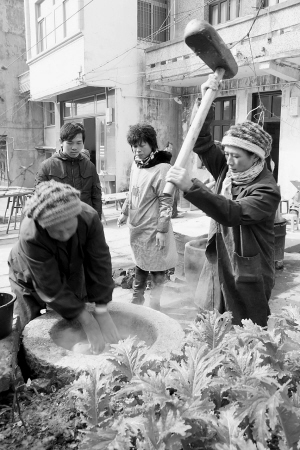Spring Festival customs in Shitang town
chinadaily.com.cn | Updated: 2019-02-20
Print PrintFishermen in Shitang town of Wenling in Taizhou, Zhejiang province are busy making tangjiu before the Spring Festival. [Photo/taizhou.com.cn]
When Spring Festival approaches, fishermen in Shitang town of Wenling in Taizhou, Zhejiang province are busy making tangjiu (糖龟/糖阄) to celebrate the festival.
Within Wenling, only fishermen in Shitang town make tangjiu to celebrate Spring Festival, while people in other places mostly make rice cakes or zongzi for the festivities.
Fishermen in Shitang town are mostly descendants of immigrants from south Fujian province. Their ancestors immigrated to Shitang town three or four hundred years ago, bringing different culinary customs and traditions from those in other places of Wenling, such as making tangjiu during Spring Festival.
Tangjiu in Shitang town and bangshegui in Yongchun, Quanzhou, Fujian province are actually similar food.
To make tangjiu, soak grinding glutinous rice and early rice in certain proportions into flour, mix it with brown sugar, and cook in a rice steamer or steam box. Pound it with a mortar, cut into strips, weigh (ie. for a large tangjiu, it should weigh between one kilogram and 1.5kg), then knead, dip into peanut oil (previous methods using sugar marinade, but as living conditions improved, people started using peanut oil which can prevent mold sticking, tends not to deteriorate, and enables the completed tangjiu to appear bright and attractive), print with a mold, and save after it dries into a hard texture.
Tangjiu is soft, glutinous, fragrant and sweet, and can be eaten after being cooked or fried after cutting it into slices.
The molds being used to make tangjiu are generally rectangle, wooden, and elaborately carved to be printed with auspicious patterns such as goldfish, which symbolizes that every year ends with ample surplus, fish and shrimp, flowers, and text stating things like health and long life, good fortune, ample salary, and longevity and happy life. They can be washed and dried after being used to stamp the pattern in the tangjiu for later use.


